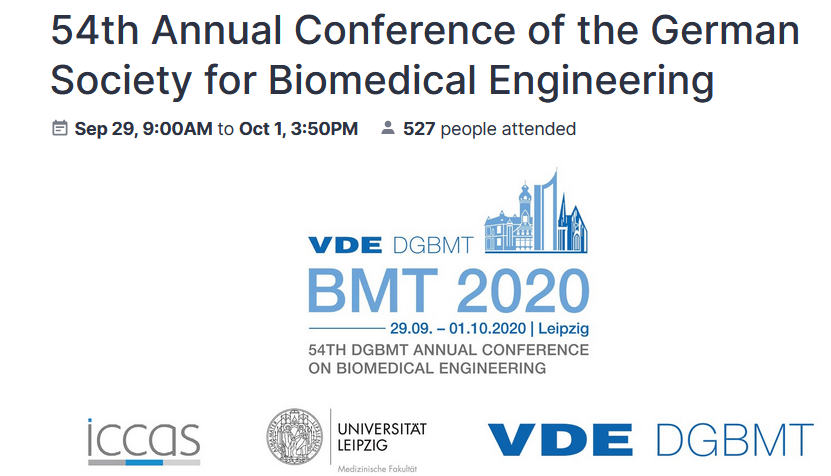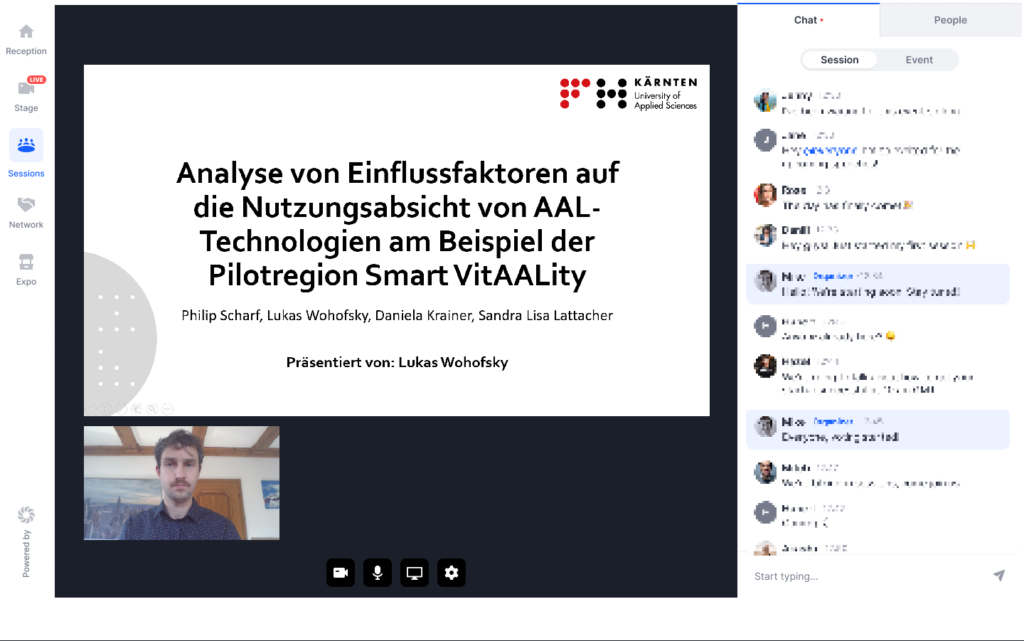
The Research Unit Active and Assisted Living was represented at this year’s AAL Congress (https://www.aal-karlsruhe.com/) with a paper on the Smart VitAALity project about the “Analysis of influencing factors on the intention-to-use”. The 2020 AAL Congress took place for the fourth time, which was originally held as the AAL Praxiskongress, a one-day event. In 2018, this event was supplemented by the AAL Wissenschaftskongress, which has since included scientists, researchers and developers from the AAL area as the target group. Due to COVID-19, the event this year took place as an online conference as part of BMT 2020 (https://www.bmt-congress.de/en), the Annual Conference of the German Society for Biomedical Engineering.

This year’s call for papers of the AAL Congress dealt with the topic acceptance, user orientation, participation and ethical considerations, in which the paper was submitted, as well as assistive robotics, artificial intelligence, future infrastructure and digital assistance.
The initial idea by lead author, Philip Scharf, was to investigate the influences on the use and acceptance of Smart VitAALity. By calculating correlations between the intention-to-use and individual influencing factors, first insights were gained. Digging deeper into the topic, it was of interest how the influencing factors differed between men and women, older and younger participants and use or non-use of the Care Center Service. The research question approached within the paper was:
How strong is the intention-to-use correlated to the (1) influencing factors and how do these correlations change by (2) sociodemographic factors and the use of a telemedical health care service?
(1) Influencing factors: interest, anxiety, skepticism, curiosity, usefulness, usability
(2) Sociodemographic factors: gender, age
If all participants are taken into account (without grouping by the means of sociodemographic factors or use of the Care Center Service), there seem to be tendencies regarding more important factors that influence the intention-to-use, such as usefulness and interest, and factors with less impact on the intention-to-use, such as anxiety and skepticism.
When comparing the sociodemographic factors and the use of the Care Center Service, punctual differences can be identified. For example, between older and younger participants it appears, that usability for older participants has a stronger relationship with the intention-to-use after prolonged use of an assistive technology. Among men, the strength of the relationship between intention-to-use and usefulness decreases with prolonged use. And in people who did not use the Care Center Service, a stronger correlation between the anxiety and the intention-to-use is found.

At the conference, the paper was presented by one of the co-authors, Lukas Wohofsky, as Philip Scharf had his final examination of his master program on the same day, which he by the way passed with excellence. The presentation turned out to be very successful and attracted wide interest and positive feedback from the (mostly) German colleagues.
The AAL area of the conference, at which medical topics prevailed due to the integration into the BMT, came up with interesting contributions from the AAL-community. These contributions included creative approaches such as the use of sensors from the automotive sector for recording vital signs in the care bed or increasing the level of safety for older e-bike riders through an assistance system. Practical contributions, such as funding and ethical considerations in the AAL area, rounded off the congress.
Please find below the Author’s Version for download (German only). The official Conference Proceedings are available for purchase via https://www.vde-verlag.de/buecher/455342/aal-kongress-2020.html (ISBN 978-3-8007-5343-7).

